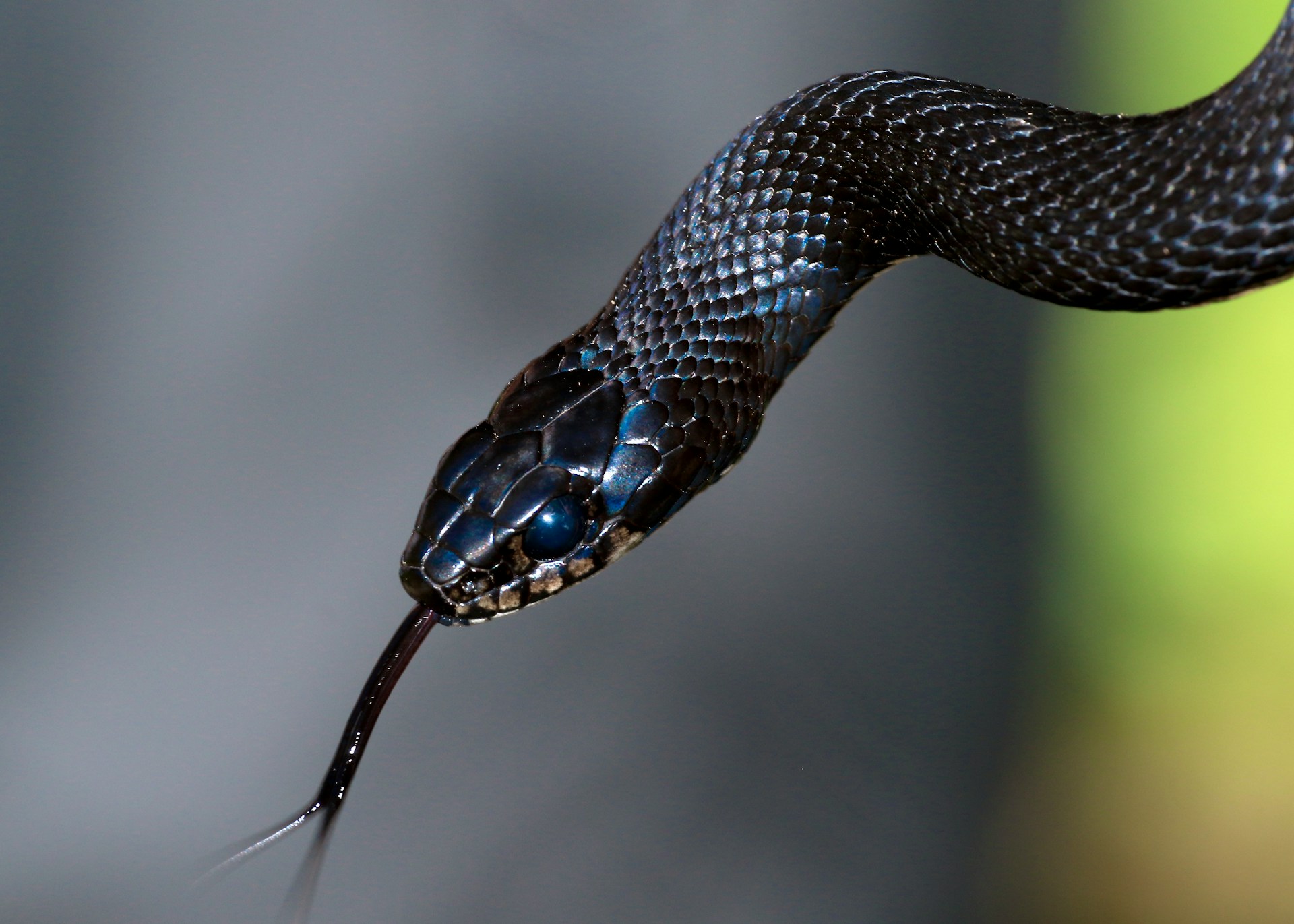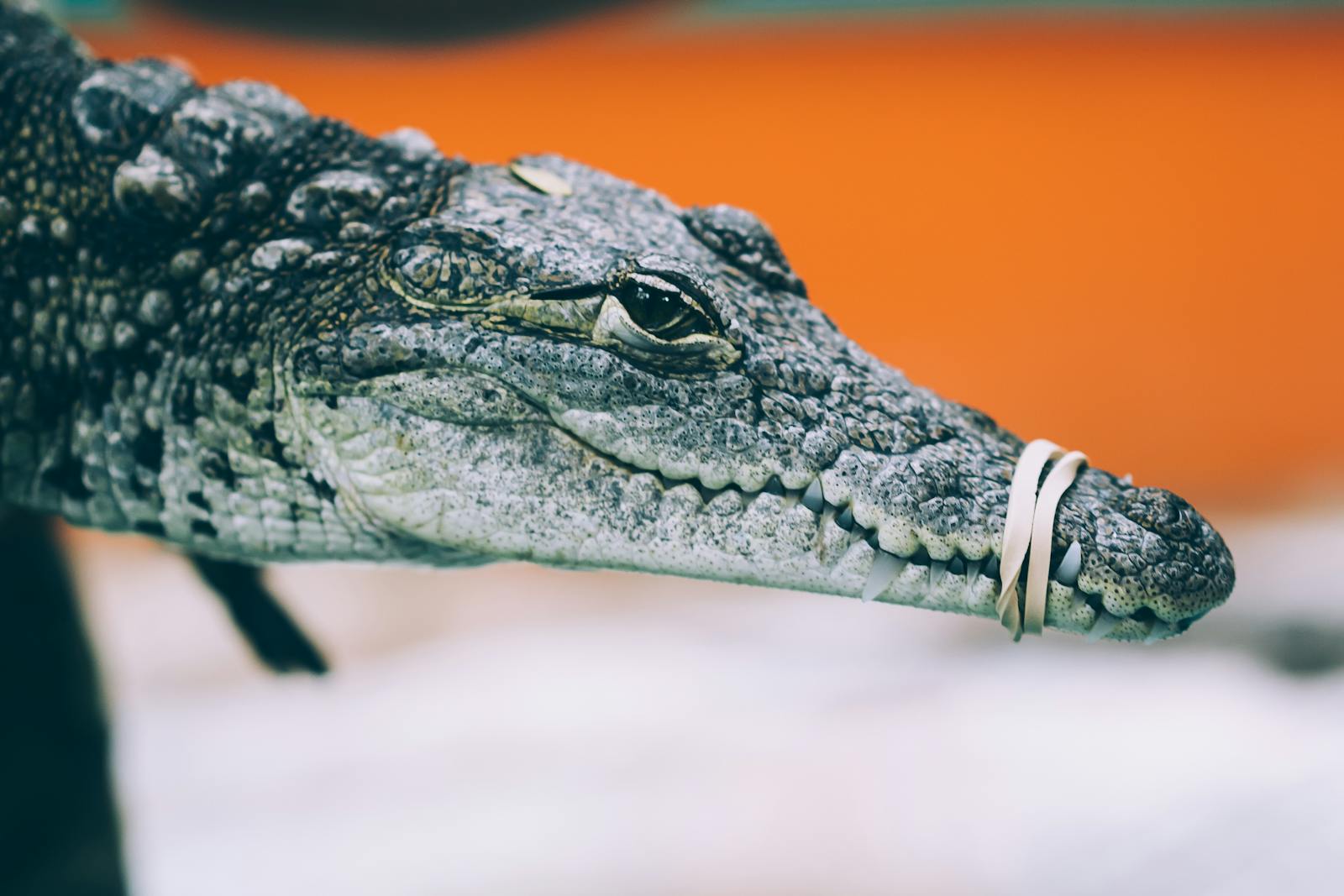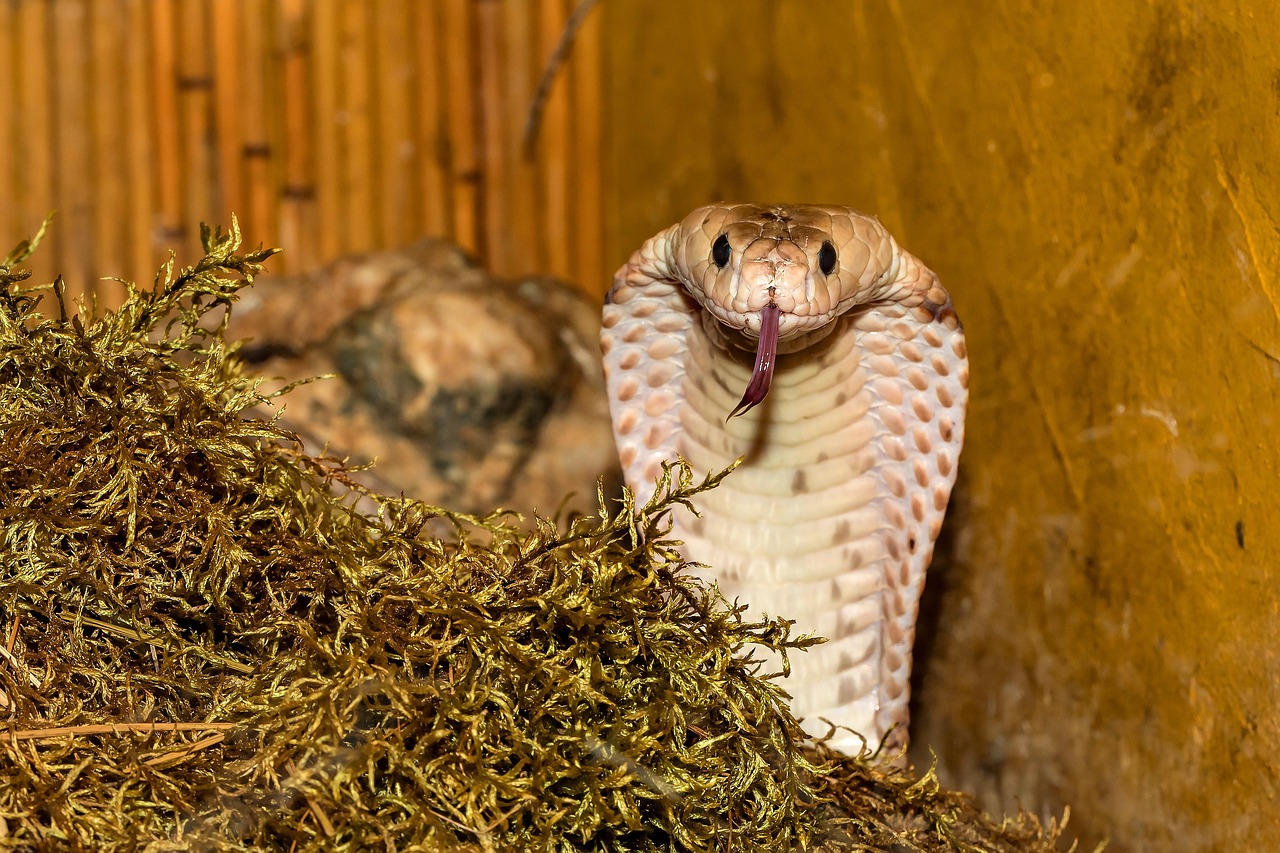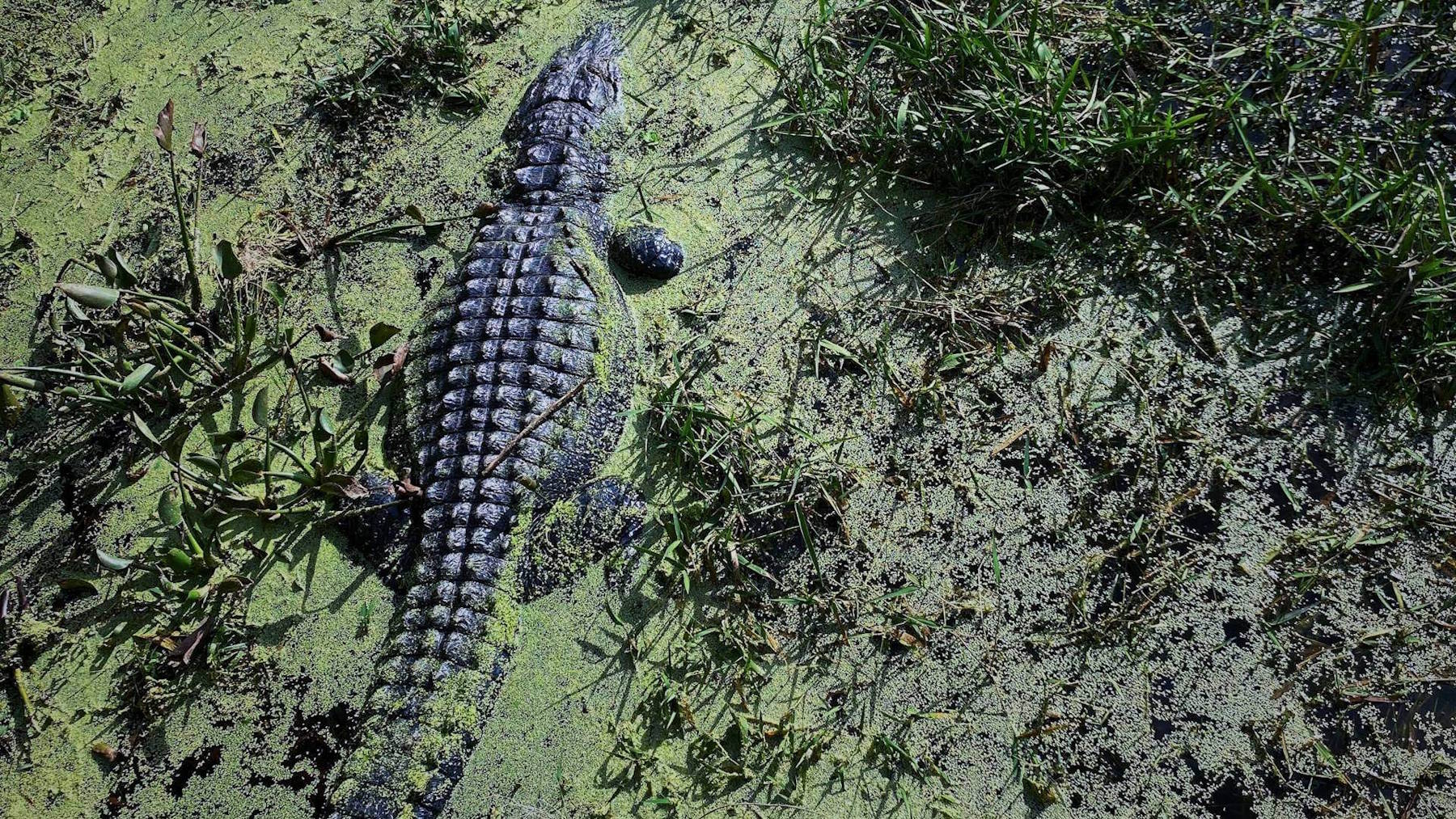In the mysterious world of reptiles, there exists a fascinating paradox – some of the deadliest species are also the most difficult to encounter in the wild.
These elusive creatures, armed with potent venoms and deadly capabilities, manage to remain largely hidden from human sight, adding an element of mystique to their already fearsome reputation.
From remote rainforests to desolate deserts, these reptiles have perfected the art of concealment, making encounters rare but potentially catastrophic.
This unique combination of deadliness and elusiveness makes them subjects of intense scientific interest and cautious respect.
Let’s explore these remarkable creatures that possess the power to kill but are seldom seen by human eyes.
The Inland Taipan: Australia’s Phantom Killer

Often referred to as the “fierce snake,” the Inland Taipan holds the title of the world’s most venomous land snake, yet remains one of the least encountered by humans.
Native to the arid regions of central east Australia, this reclusive reptile prefers to inhabit remote, sparsely populated areas, significantly reducing human encounters.
Its venom is estimated to be 200-400 times more toxic than a common cobra’s, with a single bite containing enough venom to kill approximately 100 adult humans.
Despite this lethal potential, the Inland Taipan is naturally shy and will actively avoid human contact, preferring to retreat when threatened rather than attack.
These characteristics make it both incredibly dangerous and remarkably difficult to observe in its natural habitat, earning it the reputation of a phantom among deadly reptiles.
The Secretive Blue Coral Snake of Southeast Asia

The Blue Coral Snake (Calliophis bivirgatus) boasts both striking beauty and deadly efficiency, yet remains one of the most elusive venomous snakes in Southeast Asia.
Distinguished by its vibrant blue body with bright red head and tail, this species spends most of its life burrowed underground or hidden beneath forest debris, making sightings exceptionally rare even within its native range.
What makes this snake particularly remarkable is its specialized venom delivery system – it possesses the longest venom glands of any snake, extending for up to 25% of its body length.
These glands produce a potent neurotoxin that can cause respiratory failure in victims, making the snake deadly despite its small size and secretive nature.
Researchers studying this species often go years without encountering a specimen in the wild, highlighting how effective it is at avoiding detection while maintaining its status as one of the region’s most dangerous reptiles.
The Desert Death Adder: Hidden in Plain Sight

The Desert Death Adder (Acanthophis pyrrhus) exemplifies the concept of deadly camouflage, making it one of Australia’s most difficult venomous snakes to spot despite its lethal potential.
These masters of disguise possess a remarkable ability to blend into their arid surroundings, often appearing indistinguishable from the surrounding sand, rocks, and leaf litter.
Unlike many snakes that flee when threatened, the Death Adder employs an ambush strategy, remaining perfectly still and using its worm-like tail as a lure to attract unsuspecting prey.
Its venom contains powerful neurotoxins that can cause paralysis and respiratory failure, with untreated bites having a mortality rate of up to 50% before antivenom became available.
The combination of excellent camouflage, sedentary hunting technique, and preference for remote habitats makes encounters with this snake extremely rare, despite it being one of Australia’s most dangerous reptilian inhabitants.
The Elusive King Cobra of Asian Rainforests

The King Cobra (Ophiophagus hannah) stands as the world’s longest venomous snake, yet remains surprisingly difficult to encounter despite its impressive size reaching up to 18 feet.
Native to the dense rainforests and bamboo thickets of Southeast Asia and India, these intelligent predators have a remarkable ability to disappear into their complex environments.
Unlike many venomous snakes, King Cobras are known for their acute awareness and almost calculated behavior, often actively avoiding human encounters through their exceptional sense of environmental awareness.
Their venom contains powerful neurotoxins that can cause respiratory and cardiac failure, with enough potency in a single bite to kill an elephant or up to 20 adult humans.
Despite their fearsome reputation, King Cobra populations have declined significantly due to habitat loss, making them not only elusive by nature but increasingly rare due to environmental threats, further reducing the already slim chances of encountering this magnificent but deadly reptile in the wild.
The Many-Banded Krait: Nocturnal Assassin
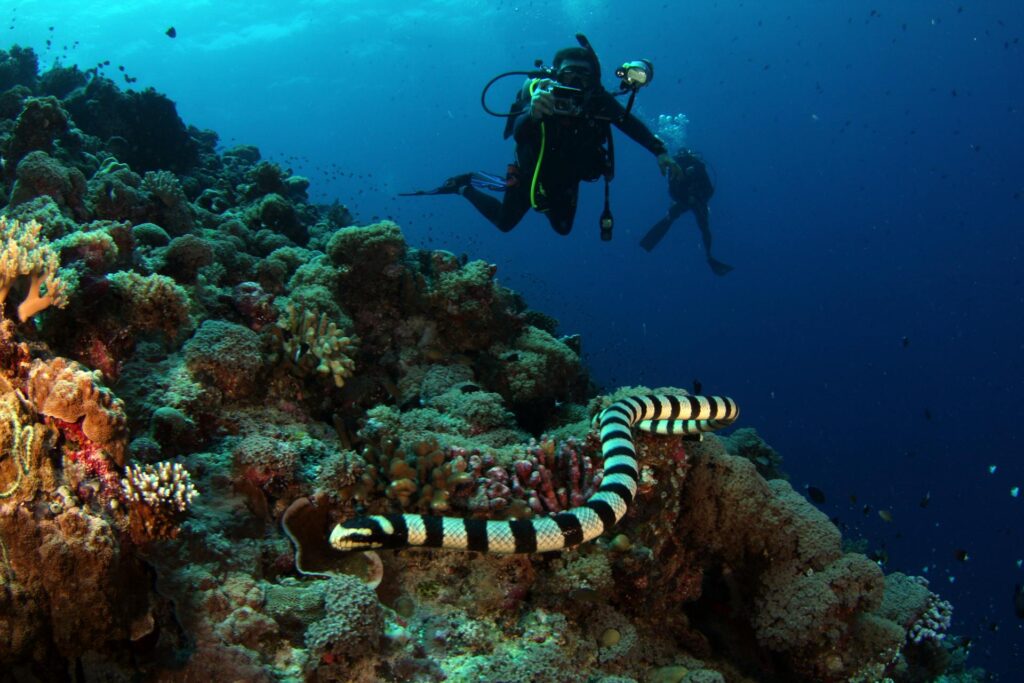
The Many-Banded Krait (Bungarus multicinctus) exemplifies how deadly reptiles can remain hidden through behavioral adaptations rather than remote habitats.
Distributed across parts of China, Taiwan, and Southeast Asia, this highly venomous elapid is primarily nocturnal, spending daylight hours tightly coiled in dark crevices, burrows, or under dense vegetation where humans rarely look.
Its distinctive black body with bright white bands might seem conspicuous, but in the darkness where it hunts, these markings break up its silhouette effectively.
The venom of the Many-Banded Krait contains powerful neurotoxins that can cause respiratory paralysis, with mortality rates exceeding 70-85% in untreated cases, making it one of Asia’s deadliest snakes.
What makes encounters particularly dangerous is its docile nature during handling – even when captured, it rarely strikes immediately, creating a false sense of security that has led to fatal consequences for those who underestimate its potential danger.
This combination of nocturnal habits, secretive daytime behavior, and misleadingly calm demeanor makes the Many-Banded Krait a perfect example of a lethal reptile that successfully avoids human detection despite living relatively close to populated areas.
The Cryptic Bushmaster of Latin American Jungles
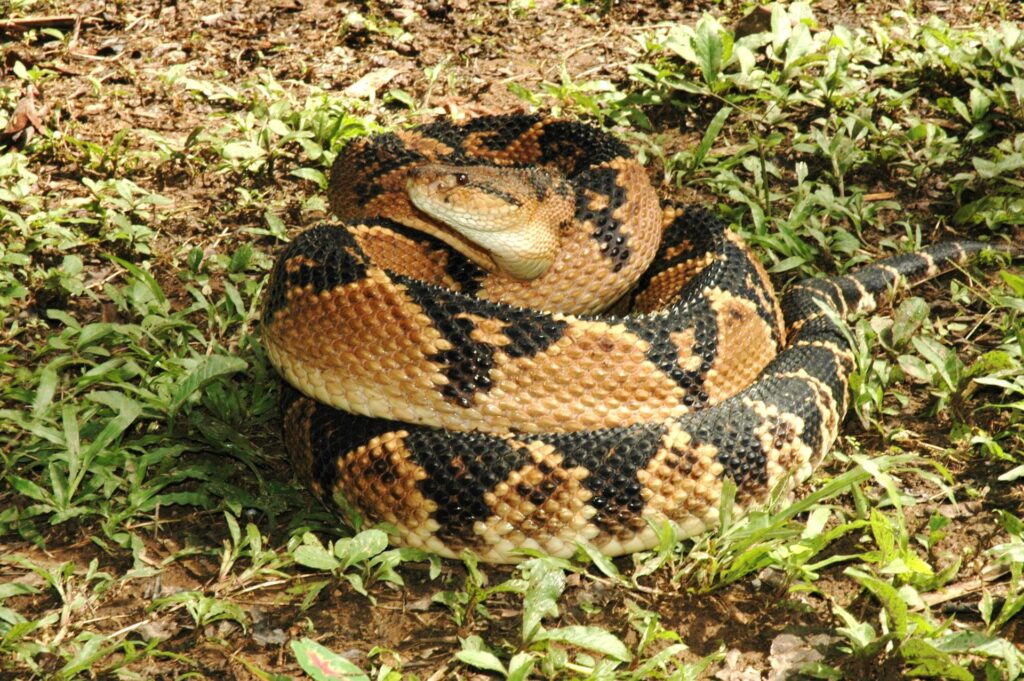
The Bushmaster (Lachesis genus) represents one of the Western Hemisphere’s most formidable yet rarely seen venomous snakes, with some specimens reaching lengths of up to 12 feet.
Native to the remote rainforests of Central and South America, these pit vipers are masters of concealment, with scale patterns that perfectly mimic the forest floor’s mixture of leaves, soil, and dappled light.
Bushmasters are primarily nocturnal, spending daylight hours hidden in rodent burrows or among tangled tree roots in areas with minimal human presence.
Their hemotoxic venom is exceptionally potent, capable of causing severe tissue damage, uncontrollable bleeding, and death if left untreated.
Despite being the largest venomous snake in the Americas, documented encounters with Bushmasters in the wild are exceedingly rare, with many herpetologists considering them among the most difficult venomous snakes to locate in their natural habitat.
This elusiveness stems not only from their excellent camouflage but also from declining populations due to habitat destruction, making these already secretive predators even more phantom-like in their existence.
The Eastern Brown Snake: Urban Ghost of Australia
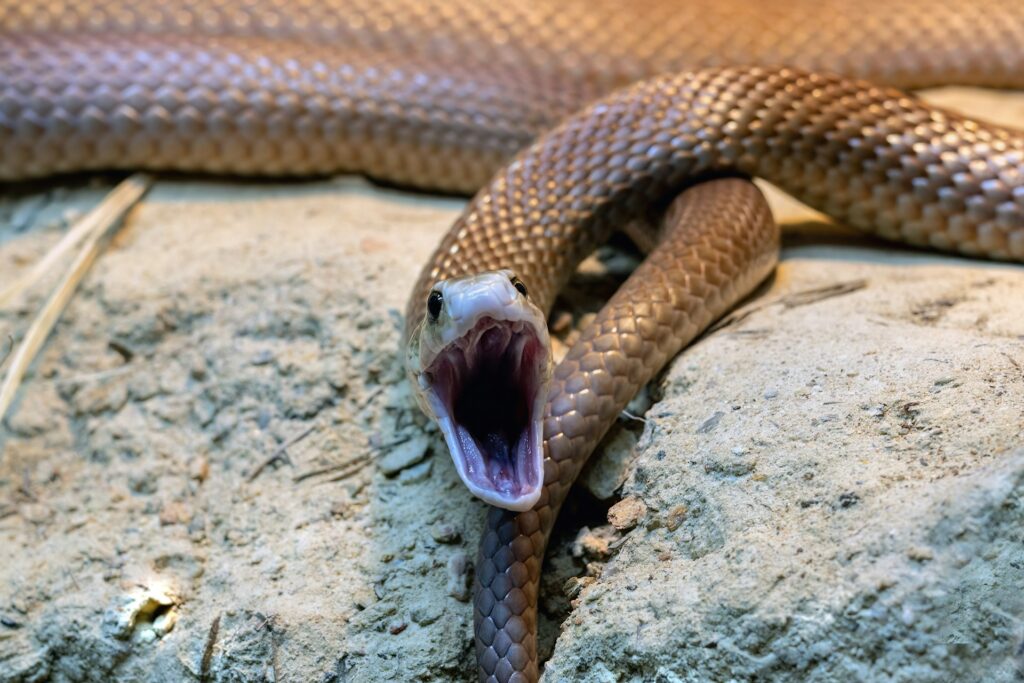
The Eastern Brown Snake (Pseudonaja textilis) stands as a peculiar anomaly among elusive venomous reptiles because it sometimes inhabits areas close to human settlement yet remains remarkably difficult to spot before an encounter occurs.
As Australia’s second most venomous land snake, its potent neurotoxic venom can cause progressive paralysis, uncontrollable bleeding, and death within hours if left untreated.
What makes this snake particularly elusive is its combination of superb camouflage, swift movement (reaching speeds up to 12 mph), and a remarkable ability to sense and avoid human presence.
Eastern Browns can vary in color from pale brown to almost black, allowing them to blend seamlessly with a variety of Australian landscapes.
Despite occasionally inhabiting farmlands and outer suburban areas, most people never see these snakes even when living in close proximity to them, as they typically freeze or quickly retreat when they detect human presence through ground vibrations.
This ability to remain hidden even in semi-urban environments, combined with their extreme toxicity, makes Eastern Browns uniquely dangerous ghosts that manage to coexist with humans while rarely being seen.
The Gaboon Viper: Master of Forest Floor Disguise

The Gaboon Viper (Bitis gabonica) possesses perhaps the most effective camouflage of any venomous snake, making it virtually invisible among the leaf litter of African forests despite being one of the heaviest venomous snakes in the world.
With a massive triangular head and extraordinarily thick body reaching weights of up to 18 pounds, one might expect this snake to be easily spotted, yet its intricate pattern of geometric shapes in browns, purples, and pinks creates perfect visual integration with decomposing forest floor vegetation.
This sedentary ambush predator rarely moves unless necessary, sometimes remaining in the same hunting position for weeks, further reducing chances of detection.
The Gaboon Viper possesses the longest fangs of any snake (up to 2 inches) and produces massive venom yields that contain potent cytotoxins and hemorrhagic compounds.
Despite inhabiting forests across central, eastern, and western Africa, including areas with human activity, encounters are remarkably rare due to the snake’s extraordinary ability to remain invisible unless almost stepped upon.
Even dedicated herpetologists with years of field experience consider spotting a Gaboon Viper in its natural habitat a significant achievement, demonstrating the effectiveness of its evolutionary concealment strategies.
The Olive Sea Snake: Phantom of Coral Reefs

The Olive Sea Snake (Aipysurus laevis) represents one of the ocean’s most venomous yet elusive reptilian predators, inhabiting coral reefs across Australia’s northern coast and parts of New Guinea.
Despite possessing venom estimated to be 4-8 times more potent than a cobra’s, human encounters with these marine reptiles remain exceptionally rare.
Unlike their terrestrial counterparts, Olive Sea Snakes can remain submerged for hours, utilizing specialized salt glands to survive in marine environments and spending much of their time hidden within coral crevices or among reef structures.
Their cryptic olive to brownish coloration allows them to blend effectively with murky reef waters and seabed environments.
What makes these sea snakes particularly difficult to encounter is their preference for hunting at depths beyond typical recreational diving limits, combined with their ability to navigate through complex coral formations inaccessible to humans.
Marine biologists studying these elusive predators often report that targeted observation requires extensive search efforts even in areas known to support healthy populations, highlighting how effectively these deadly marine reptiles maintain their phantom-like presence in oceanic ecosystems.
The Rare Boomslang of African Tree Canopies
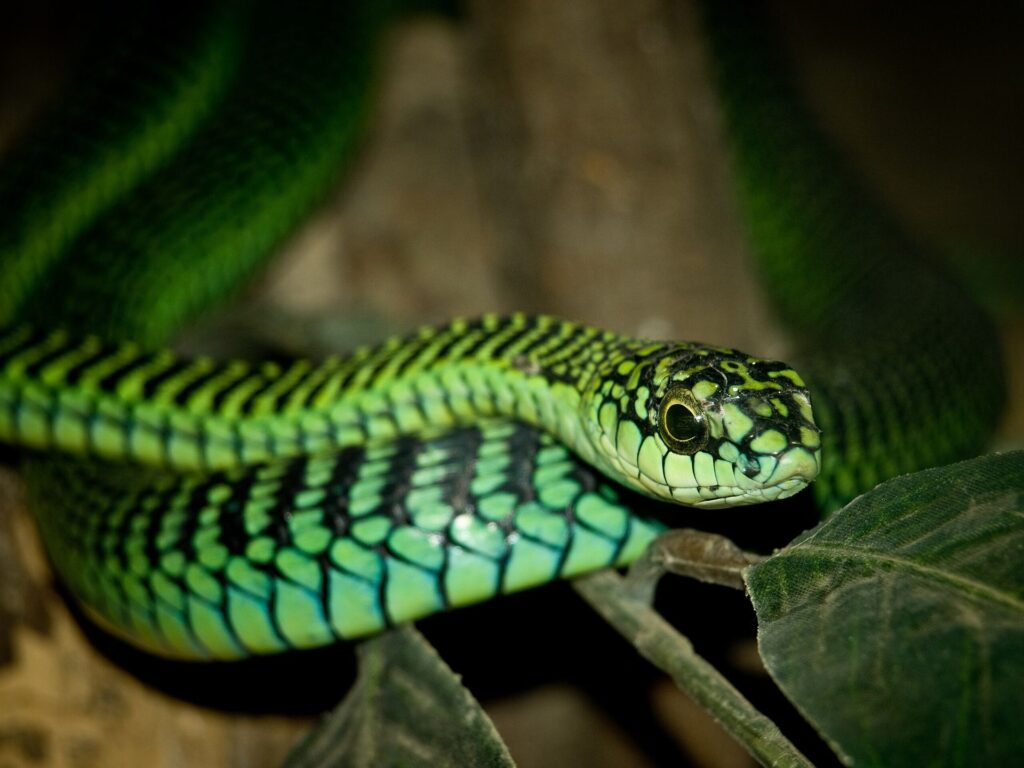
The Boomslang (Dispholidus typus) represents one of Africa’s most lethal yet seldom-seen venomous snakes, utilizing both its remarkable camouflage and arboreal lifestyle to remain hidden from human view.
This slender, rear-fanged snake spends the majority of its life navigating through the middle and upper canopies of trees across sub-Saharan Africa, making it virtually invisible to ground-dwelling observers.
What makes the Boomslang particularly deceptive is its sexually dimorphic coloration – males display brilliant green scales that blend perfectly with leafy foliage, while females exhibit brown coloration that mimics branches and bark.
Despite its potent hemotoxic venom, which causes internal bleeding and can lead to death from hemorrhaging, the Boomslang is exceptionally shy and rarely descends to ground level where human encounters might occur.
Their large eyes with keyhole-shaped pupils provide excellent vision for detecting threats, allowing them to remain motionless or retreat before humans even realize their presence.
These characteristics, combined with declining populations in many regions, make Boomslang encounters exceptionally rare events, with many wildlife professionals spending years in the field without ever spotting one of these deadly canopy dwellers.
The Secretive Saw-Scaled Viper of Desert Regions

The Saw-Scaled Viper (Echis genus) represents one of the world’s deadliest yet most elusive small vipers, responsible for more human fatalities in its range than any other snake despite its diminutive size averaging just 1-3 feet in length.
Native to arid regions across Northern Africa, the Middle East, and the Indian subcontinent, these snakes have perfected the art of desert concealment, using their keeled scales with saw-like serrations to create perfect camouflage among sand and rocky terrain.
During daylight hours, Saw-Scaled Vipers often bury themselves in loose sand with only their eyes exposed, or hide within abandoned rodent burrows to escape the desert heat.
Their distinctive warning behavior—rubbing their serrated scales together to produce a rasping sound—often occurs after they’ve remained undetected until nearly stepped upon.
The hemotoxic and cytotoxic venom of these vipers can cause severe internal bleeding, tissue necrosis, and death without proper treatment.
Despite their deadly reputation and relatively wide distribution, encounters with Saw-Scaled Vipers remain remarkably rare due to their exceptional camouflage, nocturnal hunting habits, and preference for remote, inhospitable terrain where human presence is minimal.
The Enigmatic Black Mamba of African Savannas

The Black Mamba (Dendroaspis polylepis) stands as Africa’s most feared snake, yet despite its reputation and impressive size of up to 14 feet, it remains one of the continent’s most difficult deadly snakes to encounter under natural circumstances.
Contrary to its name, the Black Mamba is actually olive to gray-brown in color (only the mouth lining is black), providing excellent camouflage among the grasslands and woodland savannas it inhabits across eastern and southern Africa.
What makes this snake particularly elusive is its combination of extraordinary speed—capable of traveling at up to 12.5 miles per hour—and its ability to detect ground vibrations from considerable distances, allowing it to retreat long before human observers approach.
The Black Mamba’s neurotoxic venom can cause respiratory paralysis within 20 minutes, giving it one of the highest mortality rates of any snake without antivenom treatment.
Despite its deadly reputation and presence in relatively populated regions of Africa, actual documented sightings of Black Mambas in truly wild contexts remain surprisingly scarce, with most encounters occurring when the snakes enter human structures seeking prey or shelter.
This ability to remain hidden despite its size and proximity to human populations demonstrates why even Africa’s most notorious serpent qualifies as one of the world’s most elusive lethal reptiles.
The Reclusive Eastern Diamondback Rattlesnake

The Eastern Diamondback Rattlesnake (Crotalus adamanteus) holds the distinction of being North America’s largest and deadliest venomous snake, yet encounters with this imposing reptile have become increasingly rare even within its native southeastern United States range.
These massive pit vipers, reaching lengths of up to 8 feet and weights exceeding 10 pounds, possess hemotoxic venom capable of causing severe tissue damage, internal bleeding, and death if left untreated.
Despite their size, Eastern Diamondbacks have perfected the art of concealment, using their distinctive diamond-pattern camouflage to blend seamlessly with the dappled light of pine forests and palmetto thickets they inhabit.
Their primarily sedentary nature—sometimes remaining in the same ambush position for weeks—combined with a tendency to use gopher tortoise burrows and other underground retreats during extreme weather makes them exceptionally difficult to locate even for experienced field herpetologists.
Habitat fragmentation and targeted persecution have reduced populations significantly across their range, further diminishing the already slim chances of encountering these impressive but deadly rattlesnakes in their natural environment.
This combination of effective camouflage, secretive behavior, and declining numbers has transformed what was once an iconic symbol of the American Southeast into an increasingly phantom-like presence on the landscape.
The Conservation Paradox of Elusive Venomous Species
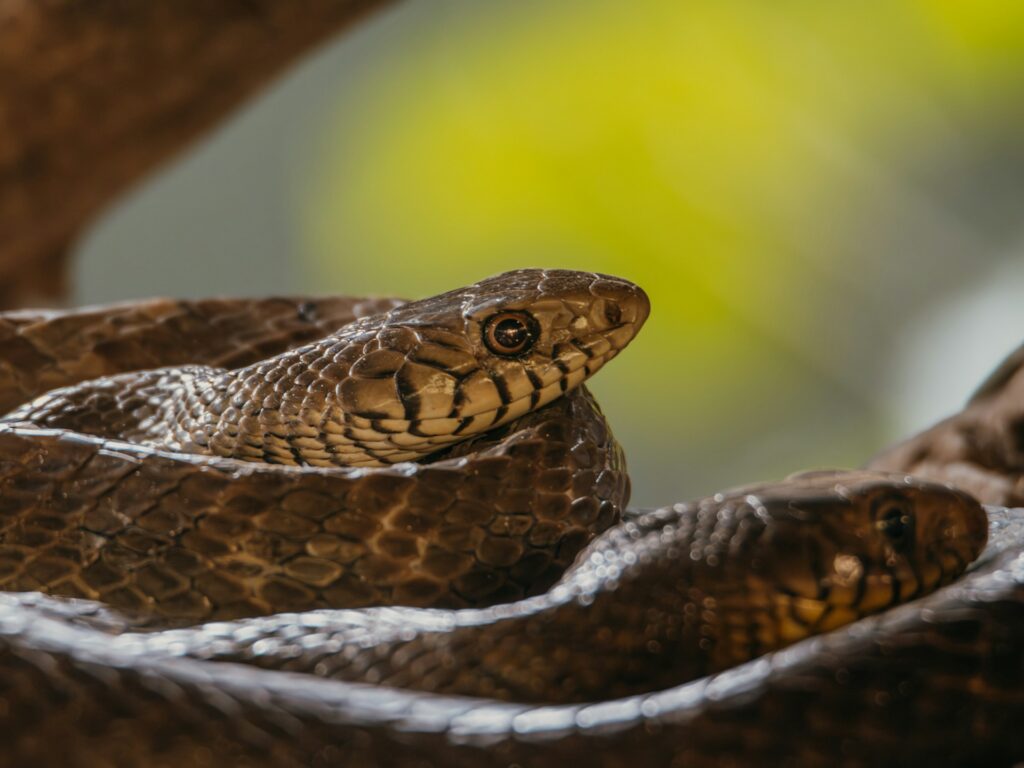
The very traits that make lethal reptiles difficult to find create a unique conservation challenge that impacts both human safety and species preservation efforts.
Their elusiveness often leads to significant knowledge gaps about population sizes, breeding habits, and ecological requirements, making it difficult to implement effective conservation strategies for species that may already be declining.
Paradoxically, the rarity of human encounters with these animals often creates a distorted perception of their abundance – many deadly reptiles are far more threatened than public awareness suggests precisely because they’re seldom seen.
This invisibility can lead to decreased conservation funding and attention compared to more.

